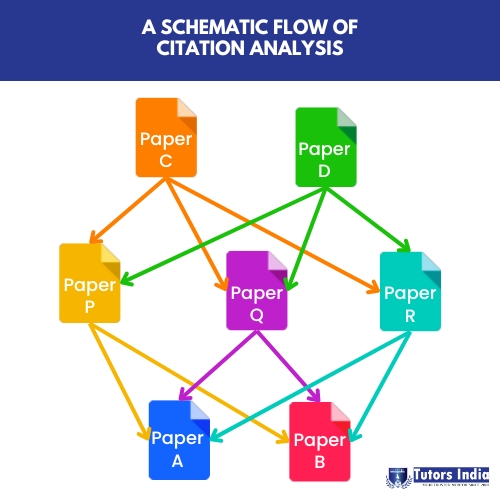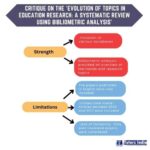How is meant by citation analysis and how is it conducted?
Introduction
Quantitative methods like bibliometric analysis help the researcher understand the wealth of data on a specific topic and select the most influential studies. The scientific literature available on a specific topic is not isolated but is often interlinked. Usually, any article or book about a subject often refers to other relevant documents when it is written. A cited reference means the author gives the reference for a citation. For example: If a line in an article cites an author named Brandon, the reference directs to the article written by Brandon, and therefore, the paper is a citation for Brandon (Qiu, 2017).
The information in the literature can be sourced from one written at the same time or taken from a study or literature written some time ago, leading to an information exchange called a citation network. The citation network is valuable for understanding scientific development and document exchange. A technique of bibliometric analysis called science mapping helps understand the relationship between research components by analysing the intellectual interactions among the research components.
Citation analysis
Citation analysis falls under the category of science mapping. It is a fundamental method which involves analysing the relationships among academic publications by examining the frequency and patterns of citations between them. It involves identifying the most influential publications in a research field, tracking the evolution of ideas and themes over time, and identifying connections between different authors and research groups. The number of citations an article receives indicates how influential it is. Citation analysis is commonly used in bibliometric research to study the structure and development of scholarly communication and assess the impact and influence of individual publications, authors, and institutions. In addition, it is used alongside peer review for assessing research (Donthu, 2021).

Figure 1: A schematic Flow of citation analysis
Steps of conducting a citation analysis
The following steps describe the fundamental steps of citation analysis.
- Choosing the subject to obtain statistics: The researcher must choose the subject they are interested in and search for it in recognised journals. This gives the results of a number of related studies that can be determined.
- The data of citation: When the paper is selected, the number of citations are counted, and the citations are classified based on type, publication time, language and the degree to which the articles are self-cited.
- Analysis: An analysis based on numerous indicators and perspectives is conducted to obtain citation data, depending on the study’s objective. The study’s purpose may encompass the theoretical analysis of citations, the concentration and discrete trend analysis of citation quantity, the citation quantity law with the time of growth, and the significant indexes of citation analysis, such as self-citation quantity, citation language, literature type, time, and country.
- Conclusion: An analysis that corresponds to the principles of citation analysis is performed, and the inference is drawn. The citation analysis is heavily dependent on citation statistics, and therefore, the latter are the primary components of the analysis (Qiu, 2017).
Conclusion
Citation analysis is one of the technique of science mapping methods of bibliometric analysis which helps the researcher to understand the exchange of information and identify the most impactful research articles. The number of citations is directly proportional to the study’s impact.
Tutors India has assisted Masters students in their dissertation since 2001. The team of experts from reputed universities helps students in research methodology, statistical analysis and offers publication assistance. Moreover, Tutors India has had a track-record of plagiarism-free and high-quality work that aligns with university guidelines, ensuring the students are satisfied with the work.
References:
- Qiu, Junping & Zhao, Rongying & Yang, Siluo & Dong, Ke. (2017). Methods of Citation Analysis. 10.1007/978-981-10-4032-0_8.
- Donthu, N., Kumar, S., Mukherjee, D., Pandey, N., & Lim, W. M. (2021). How to conduct a bibliometric analysis: An overview and guidelines. Journal of Business Research, 133, 285–296. https://doi.org/10.1016/j.jbusres.2021.04.070

 Previous Post
Previous Post Next Post
Next Post